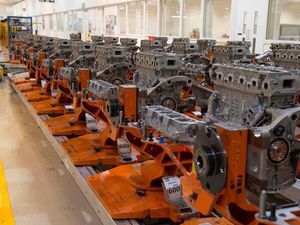How does the petrol-powered internal combustion engine work?
The combustion engine is something that we rely on each and every day. But how does it work? We explore the mechanicals behind the modern petrol engine

Do you understand the mechanical workings of the vehicle you drive on a daily basis? If your answer is no, don’t worry. You’re not the first – and certainly won’t be the last – person to simply appreciate ‘the car’ without fully understanding how it actually works.
In brief, the magic formula is simple: air mixes with fuel, the spark plugs ignite and, as if by magic, you have internal combustion. To help you get to know the basics in a little more detail, we’ve put together the following explanation on how a standard petrol-powered engine works.
What fuels my car?
Cars, like other vehicles, are powered by fuels made from petroleum.

What are cylinders?
Engines are predominately built around a set of two to twelve cylinders – usually four, six or eight.
What do cylinders and pistons do?
The cylinders are opened and closed by the motion of pistons, which are fixed to the bottom of each cylinder.

What are valves?
At the top of each cylinder are two valves – the inlet valve, which allows fuel and air to enter the cylinder via a carburettor or electronic fuel-injector (depending on the age of your vehicle), and the outlet valve, which lets the exhaust gases escape.
How is the fuel ignited in the cylinders?
Alongside the two valves is also a spark plug – an electrically-controlled device that causes a spark and sets fire to the fuel, thus powering the vehicle.
How do these components work together?
Each of the components listed above have to work in unison in order for an engine to fire and run efficiently. This process is simple:

Power: The spark ignites the mixture causing a small explosion. It’s the hot gas created by this explosion that pushes the piston back down, thus driving the crankshaft and, therefore, the wheels.
Outlet: Following the explosion, the crankshaft forces the piston back to the top of the once again. This is when all the exhaust gases created by the chemical reaction are pushed through the outlet valve, allowing them to exit the system via the exhaust.
There you have it! You now know how a petrol-powered internal combustion engine works.





